Kentaro Katahira
Statistical Mechanics of Node-perturbation Learning with Noisy Baseline
Jun 20, 2017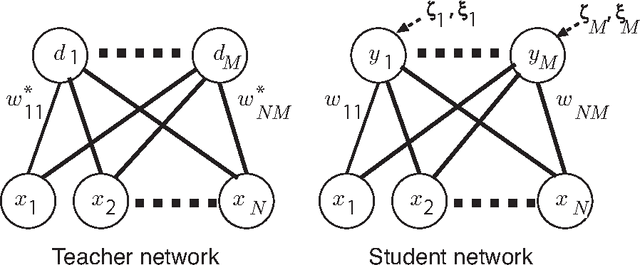
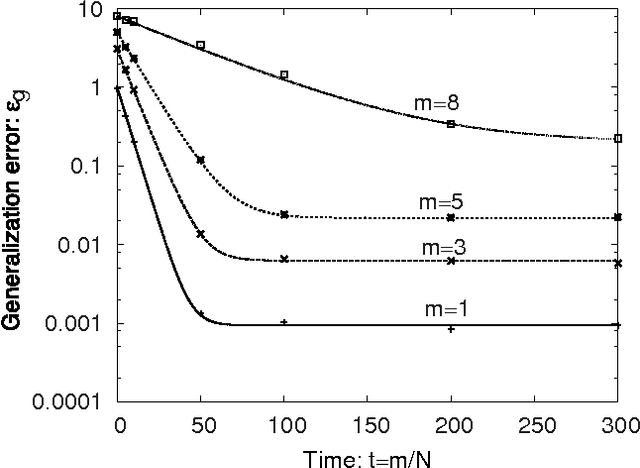
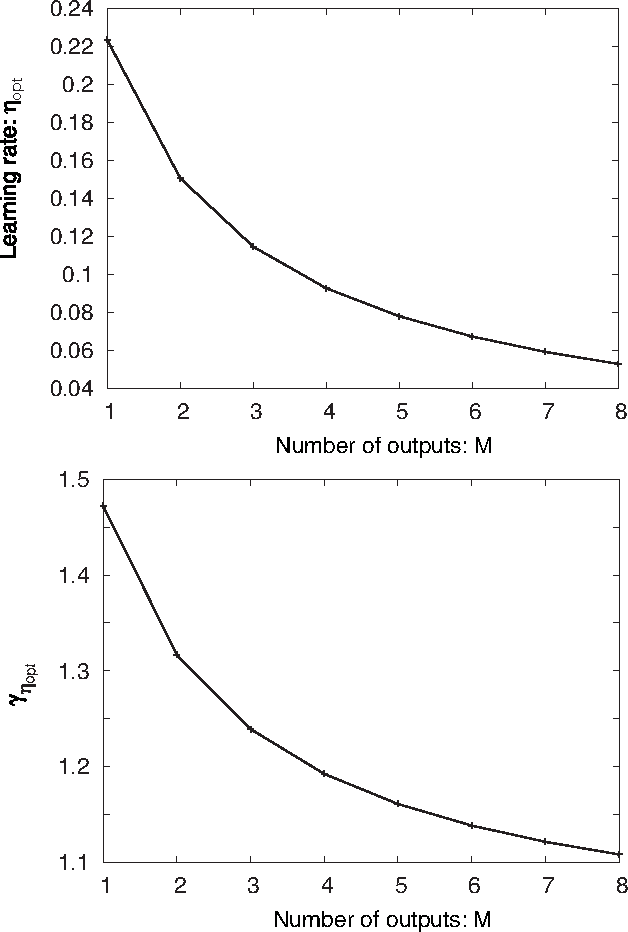
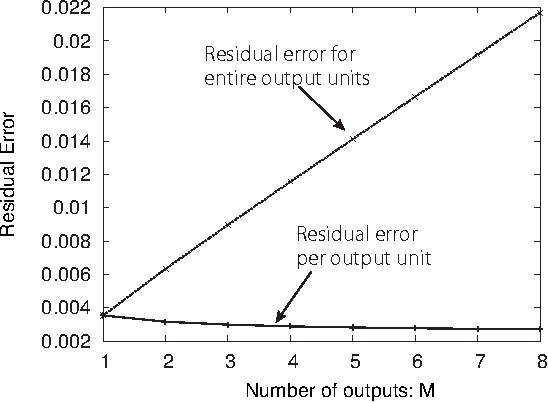
Abstract:Node-perturbation learning is a type of statistical gradient descent algorithm that can be applied to problems where the objective function is not explicitly formulated, including reinforcement learning. It estimates the gradient of an objective function by using the change in the object function in response to the perturbation. The value of the objective function for an unperturbed output is called a baseline. Cho et al. proposed node-perturbation learning with a noisy baseline. In this paper, we report on building the statistical mechanics of Cho's model and on deriving coupled differential equations of order parameters that depict learning dynamics. We also show how to derive the generalization error by solving the differential equations of order parameters. On the basis of the results, we show that Cho's results are also apply in general cases and show some general performances of Cho's model.
* 16 pages, 7 figures, submitted to JPSJ
Complex sequencing rules of birdsong can be explained by simple hidden Markov processes
Nov 11, 2010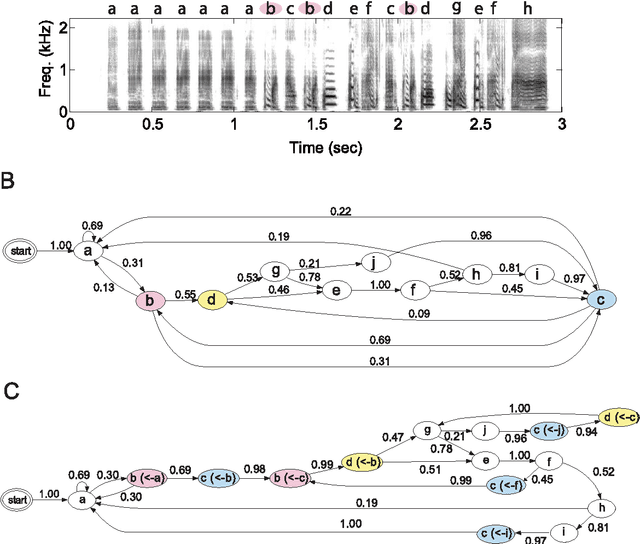
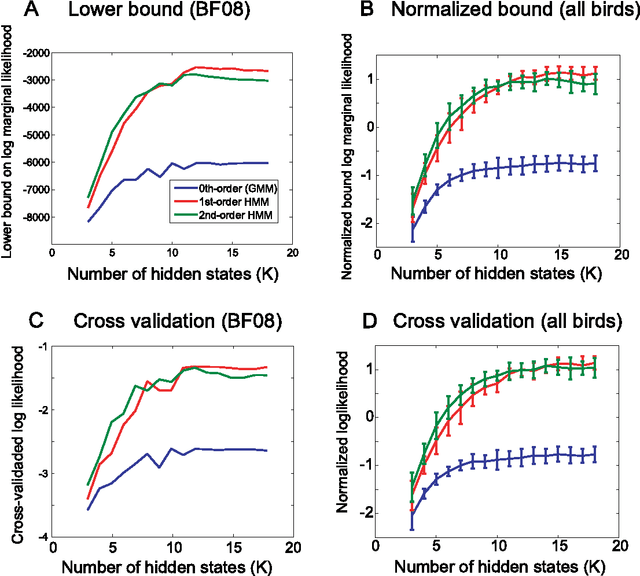
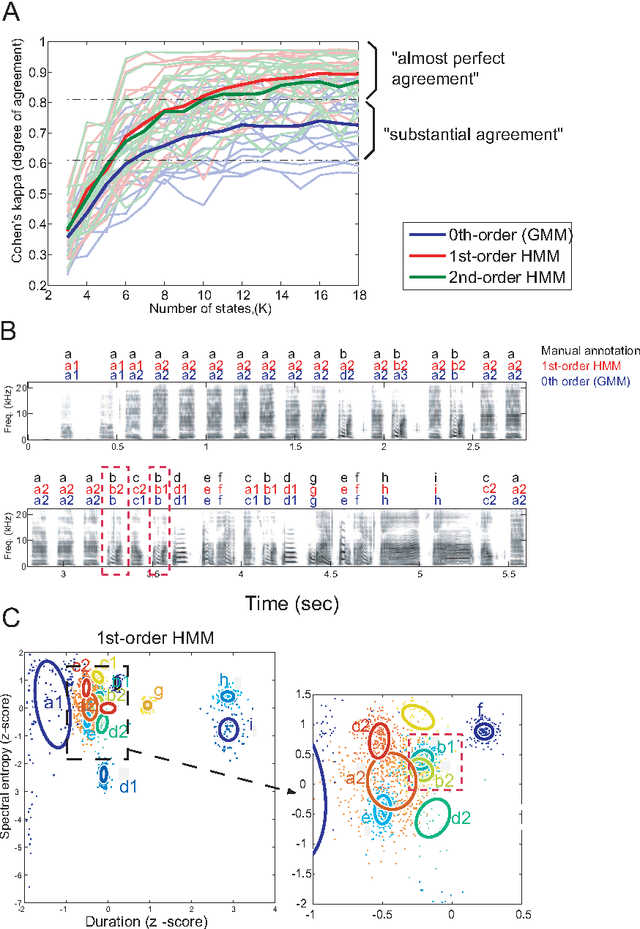
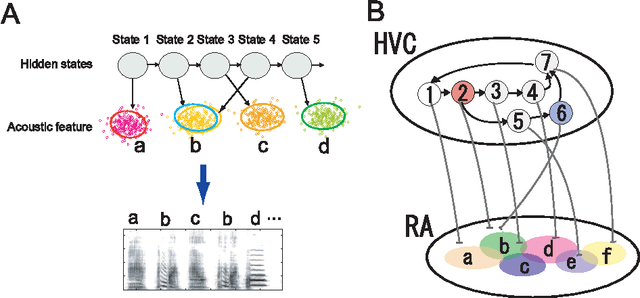
Abstract:Complex sequencing rules observed in birdsongs provide an opportunity to investigate the neural mechanism for generating complex sequential behaviors. To relate the findings from studying birdsongs to other sequential behaviors, it is crucial to characterize the statistical properties of the sequencing rules in birdsongs. However, the properties of the sequencing rules in birdsongs have not yet been fully addressed. In this study, we investigate the statistical propertiesof the complex birdsong of the Bengalese finch (Lonchura striata var. domestica). Based on manual-annotated syllable sequences, we first show that there are significant higher-order context dependencies in Bengalese finch songs, that is, which syllable appears next depends on more than one previous syllable. This property is shared with other complex sequential behaviors. We then analyze acoustic features of the song and show that higher-order context dependencies can be explained using first-order hidden state transition dynamics with redundant hidden states. This model corresponds to hidden Markov models (HMMs), well known statistical models with a large range of application for time series modeling. The song annotation with these models with first-order hidden state dynamics agreed well with manual annotation, the score was comparable to that of a second-order HMM, and surpassed the zeroth-order model (the Gaussian mixture model (GMM)), which does not use context information. Our results imply that the hierarchical representation with hidden state dynamics may underlie the neural implementation for generating complex sequences with higher-order dependencies.
 Add to Chrome
Add to Chrome Add to Firefox
Add to Firefox Add to Edge
Add to Edge